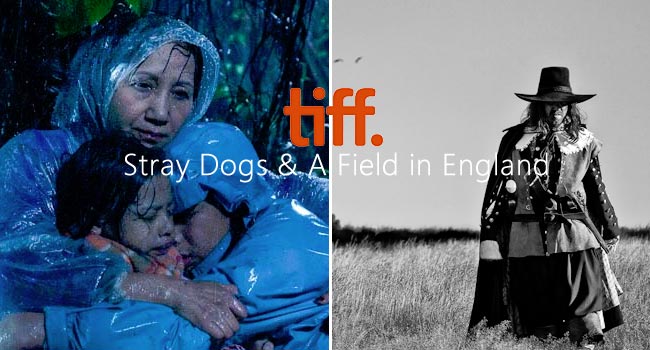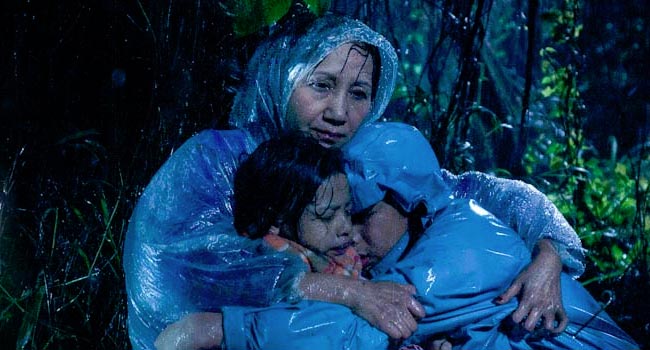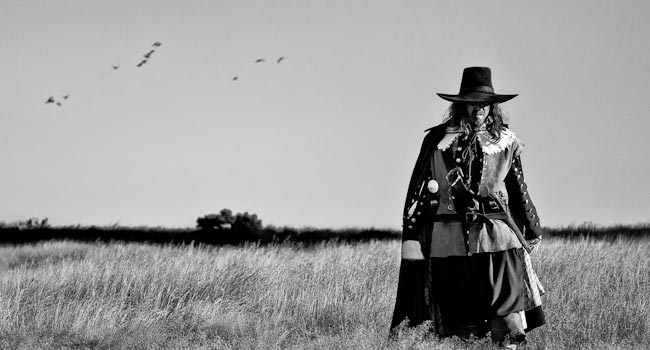TIFF 2013: Stray Dogs & A Field in England

After spending the previous day watching two very slow-moving films, I figured I was ready to take on the latest film from one of the masters of ‘slow cinema.’ I’ve been a huge fan of Tsai Ming-Liang’s work over the years, but his last film Visage was more or less a flop when it premiered at Cannes four years ago. When I sat down for an afternoon screening of Stray Dogs, Tsai’s latest (which also won the Grand Jury Prize at Venice), I wasn’t sure of what I was going to get. Thankfully, I got the first truly great film I’ve seen at TIFF this year.
Stray Dogs

As many other reviews have said by this point, plot and narrative don’t have much of a place in Stray Dogs. A single father (Lee Kang-Sheng, a regular in Tsai’s films) lives in poverty with his two children (Sheng’s real-life nephew and niece), and they encounter three different women who might actually be the same person. Spending time going over these kinds of details are fruitless anyways, as it’s not what Tsai is interested in either.
Tsai’s slow style ends up portraying homelessness and poverty in a way that I can’t say I’ve seen before. With nowhere for these characters to go and nothing for them to do, Tsai conveys the huge physical and emotional weight of time on these people with every moment. The father tries earning income by, ironically, holding up signs advertising real estate. There are several shots where the camera stays motionless, observing him standing in the rain for 6 or 7 minutes at a time. The series of shots reach a powerful conclusion when they show Lee in a close-up, crying as he sings an old song.
It’s only one of the many stunning moments throughout Stray Dogs, as Tsai shows he still is a complete master when it comes to form. His shots may go on for a while, but they’re framed with such care and precision it’s hard not to immerse oneself in what’s on screen. Even scenes like one where Lee eats a meal for nearly 10 minutes is captivating to watch. For the character it’s presumably their first proper meal in ages, and the camera treats it with the same importance as the father does.
The eating scene is one of the lesser examples of the literal and figurative lengths Tsai goes to in Stray Dogs. The most buzzed about scene since its premiere involves Lee kissing, suffocating, eating and crying over a cabbage for 11 minutes. Yes, it’s absurd, but watching Lee run through so many emotions throughout the scene is a marvel to watch. And amazingly nobody has put too much of an emphasis on the penultimate shot, a scene that bowled me over completely in its extremity. It’s one of Tsai’s best moments in his long and wonderful career, and shows just how powerful duration can be when used wisely. It might not be the best entry point for Tsai’s films, but anyone willing to embrace the style will be in for one of Tsai’s best (and, sadly, possibly last) works as a director.
RATING: 8.2
A Field in England

On the flip side, Ben Wheatley’s A Field in England proved to be a depressing indicator for me that the director’s downward shift in quality since his first feature is here to stay. Taking place during the English Civil War in the 1600s, a group of deserters come upon an alchemist in the woods who drugs and uses them as helpers for a treasure hunt. The combination of a period piece with psychedelic imagery sounds like it could make for a great match, but most of A Field in England is a slog to get through. Read more in my full review, which is linked below.
Full Review of A Field in England
Next up:
I take a little break before returning with Johnnie To’s new film, along with Sion Sono’s next attempt at doing something batshit crazy (and early word says he succeeds with flying colours).
